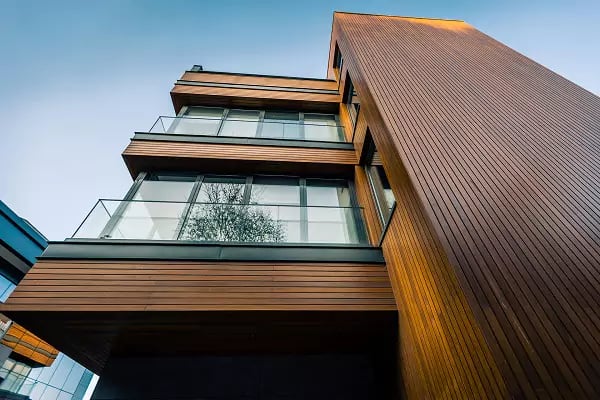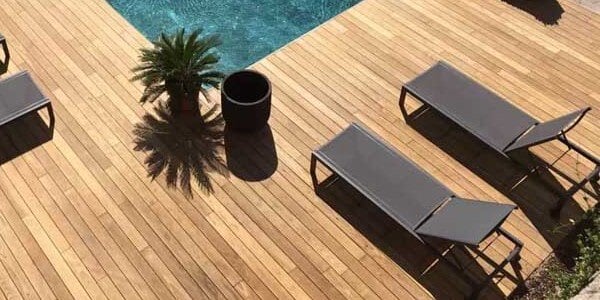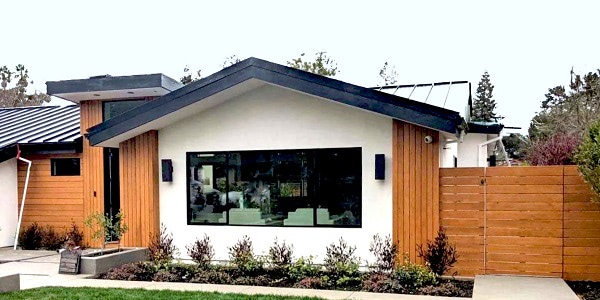
The use of thermally modified wood siding is on the rise. An ideal option for exteriors of homes and commercial buildings, it is durable, environmentally friendly, and low maintenance. Should you consider it for your home improvement project?
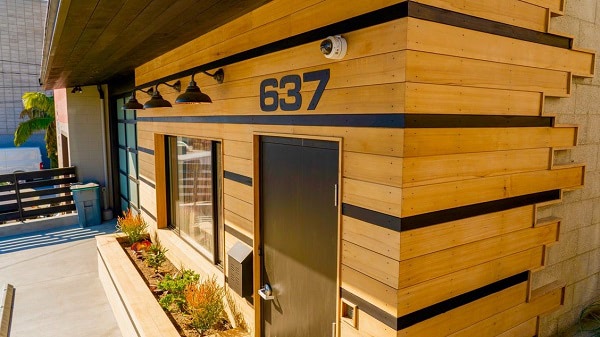
What is Thermally Modified Wood Siding?
Thermally modified wood has undergone a patented treatment using high heat and steam in a high-pressure kiln. This process creates a much more durable, stable wood siding that has higher resistance to rot, insects, and decay than its non-modified version.
But why choose it as your alternative to hardwood siding?
RELATED: What Is Thermally Modified Wood Decking and Siding?
How Is Thermally Modified Wood Better For Your House Siding Project?
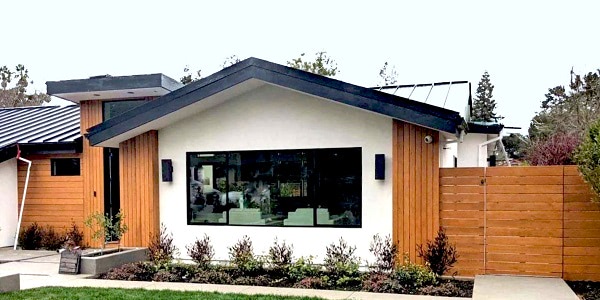 Thermally Modified Hem-Fir siding and fencing contrasts nicely with the white stucco accents.
Thermally Modified Hem-Fir siding and fencing contrasts nicely with the white stucco accents.
1. Cost-effective
If your project calls for premium hardwood durability, but hardwood does not meet the budget you have in mind, thermally modified wood siding is a more affordable solution.
Another popular reason: Hem-Fir gives you the the look and feel of a hardwood or cedar siding at a more affordable price point.
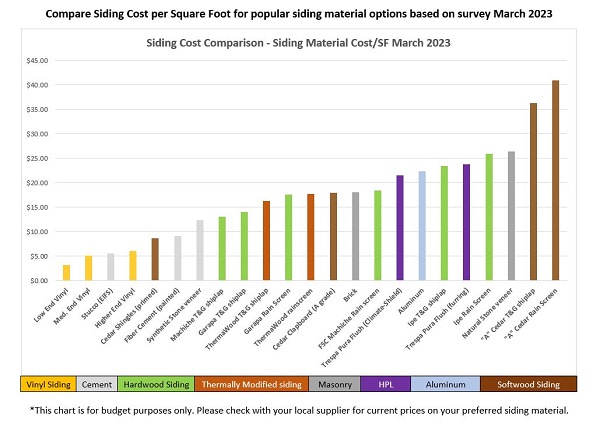
For easier viewing, download this comparison chart here.
As you can see, (above), Cedar lumber is top of the market and availability is very low. Hardwoods like Ipe, Machiche, and Jatoba are more affordable and more available than Cedar.
For budgets that need a lower upfront price point without losing quality, ThermoWood and ThermaWood thermally modified lumbers are fantastic alternatives.
RELATED: Siding Cost Trends: Siding Price Alert 2023
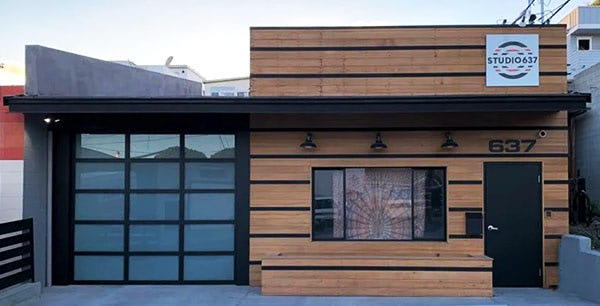
ThermaWood Hem-Fir, thermally modified hemlock, adds elegance and modern charm to the exterior of this fitness studio building.
2. Aesthetics
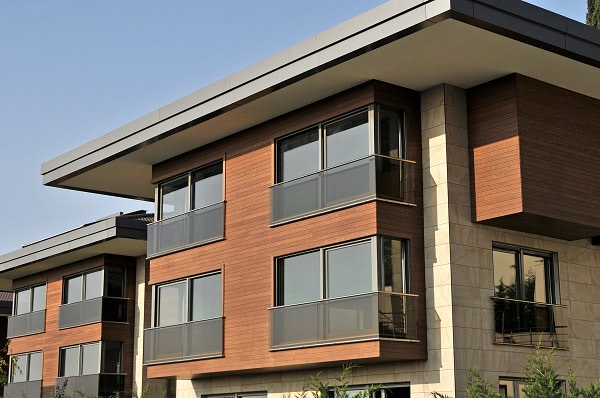
Thermally modified ash siding on a commercial build, chosen for its longevity, durability, and curb appeal
RELATED: View the Thermowood Ash Siding Project Photo Gallery
Thermally modified wood siding is real wood with its own distinctive, rich color and texture. The modification process gives it a darker, more rustic look that many people find appealing.
Various shades of golden-brown to dark chocolate-brown characterize its unique, rich colors. Its distinctive texture adds depth. Each piece of siding has its own distinct character.
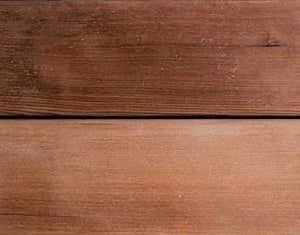
Mataverde ThermaWood Hem-Fir close up detail
Plus, thermally modified siding can be painted or stained – but it doesn't have to be. It can also be left natural to show off that gorgeous color and grain.
RELATED: View the ThermaWood Hem-Fir Siding Project Photo Gallery
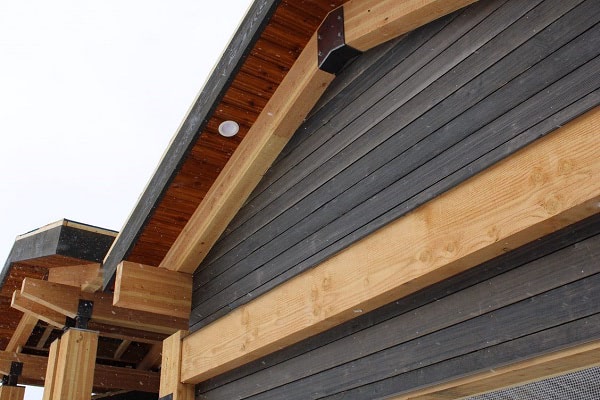
This exterior design using thermally modified Hem-Fir wood combines two stains plus a clear finish to create a custom contrasting siding that accents the architectural details.
RELATED: View the ThermaWood Hem-Fir Project Photo Gallery
3. Low maintenance
Because thermally modified wood is more resistant to rot and insects than its original form, it requires far less maintenance than other wood siding options. This makes it an ideal choice for those who want a low-maintenance, natural-looking exterior for their home or building that will save them money and time for years.
Maintenance needs are more comparable to hardwoods than, for example, Western Red Cedar, a high-cost softwood with higher upkeep needs.
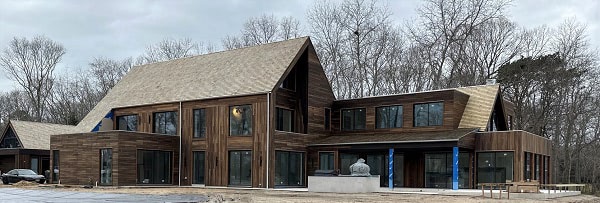
Here the medium- to dark chocolate-brown tones of thermally modified ash were a part of the exterior design. Thermowood Ash in random lengths is installed both horizontally and vertically for added interest.
It is possible to finish and refinish thermally modified materials as needed. Or it can be left natural using a UV protective finish. It can even weather to gray without more maintenance.
This makes it an ideal choice for those who want a low-maintenance, natural-looking exterior for their home or building that will save them money and time for years.
Ready for more? Learn how installing your thermally modified siding
with a rainscreen system can save you time, labor, and create a healthier home.
4. Durability
The heat treatment process makes the wood more durable and resistant to weathering than the non-modified version, making it an excellent choice for outdoor applications.
Since thermally modified wood is very resistant to decay, insects, and moisture it is an excellent choice for areas with harsh climates or high humidity.
Modification also makes these woods more stable, reducing the risk of warping, twisting, or cracking to keep your siding looking better, longer.
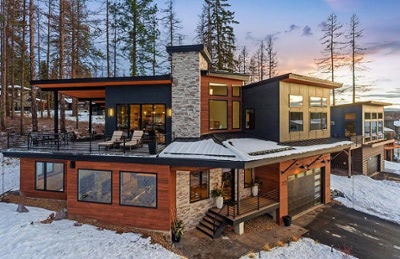
A mountain home will need to stand up to all kinds of weather and storms. For both beauty and durability, this home was designed using thermally modified Hem-Fir for the entire exterior - including the rooftop deck.
5. Natural Material
Some people prefer the look and feel of real wood and appreciate the natural beauty and character it adds to their home or building's exterior. If that describes you, you probably designed your exterior accordingly.
Thermally modified wood siding is real wood. So there is no need to sacrifice the exterior design you imagined for an artificial "wood-look" alternative, if budget or availability is a criteria.
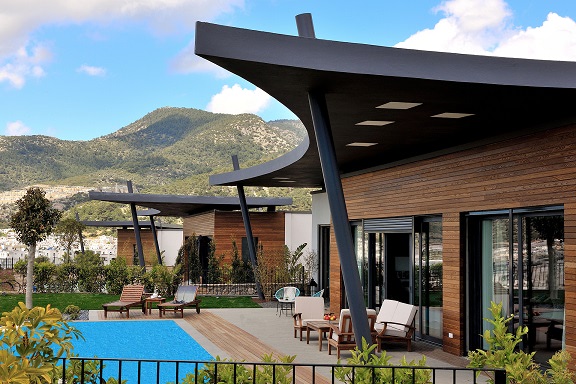
Custom built modern homes using thermally modified Ash siding
6. Sustainability
Mataverde Thermally Modified Wood siding is sourced from responsibly managed forests, ensuring sustainability and eco-friendliness. You can feel confident that your siding material meets or exceeds your expectations in both quality and sustainability.
Additionally, thermal modification uses only heat and steam, without chemicals or preservatives in the wood.
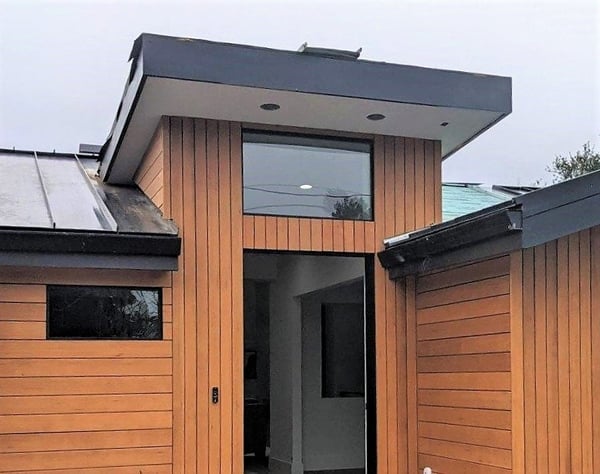
7. Fire Rated
Thermally modified wood siding is also available with a fire-resistance treatment.
Mataverde Thermawood FR is fire-rated is certified for use in wildfire-prone areas and is in demand with builders for that reason.
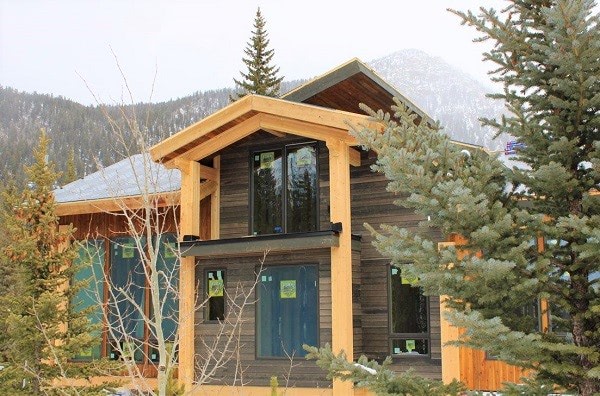
Thermawood fire treated Hem-Fir can be used to design beautiful, real wood exteriors.
RELATED: 8 Reasons to Consider Fire Retardant Treated Wood Siding
Overall, thermally modified wood siding materials like Thermowood Ash and Thermawood Hem-Fir provide a durable, aesthetically pleasing, sustainable, low-maintenance, and cost-effective solution for those looking to enhance the appearance and longevity of their building's exterior.
If you have questions on Thermally Modified wood, please don't hesitate to contact us, we're ready to help.

Related Posts
